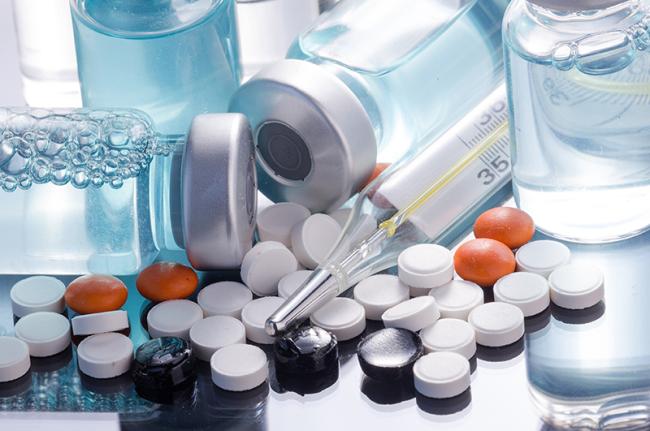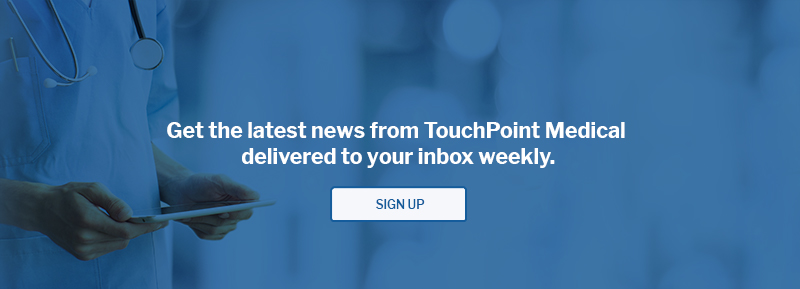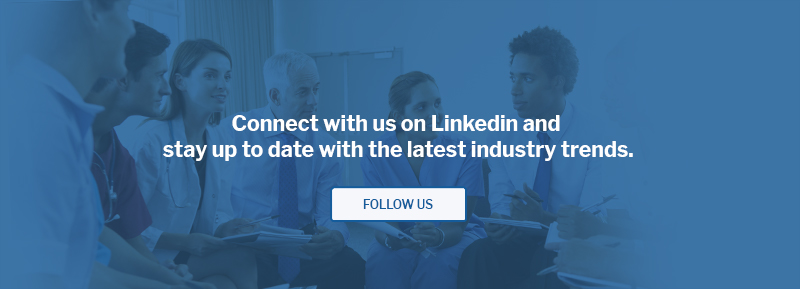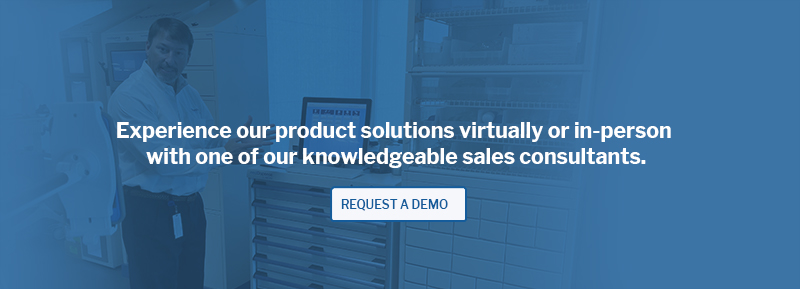White Paper: The 3 Ps of Medication Management
Medication management is a strategy for engaging with patients and caregivers to create and maintain accurate medication records, and ensure medications are administered in a timely, safe, and precise manner. Medication management processes are driven by expert care teams (people), guided by the goals of the facility (places), and enabled by advanced equipment (products). In this white paper, we will explore the elements of medication management from the focal points of these three ‘p’s—people, places, and products.
Successfully managing medication takes precision, but also must allow care teams to respond to patient symptoms, vitals, and other indications. This white paper will illustrate how medication management workflows can be supported using advanced equipment and software, such as automated dispensing cabinets, pre-staged medication delivery carts, and the medLogic™ software platform. We will also discuss benefits to care teams in specialized facilities like behavioral health centers, hospice centers, and long-term care facilities, and how improved medication management workflows promote patient well-being.
Medication management is one of the fundamental drivers of exceptional patient care. When medications are given as prescribed, they have the power to save, transform and sustain life. Healthcare facilities have taken a proactive and modern approach to improving their medication management lifecycle. Through the adoption of medication management technologies that are tailored to their needs, healthcare facilities have taken a step towards optimizing the time of their care teams. In turn this allows care teams to focus more on patient management.
Facilities—and the professionals who run them—have highly specialized processes based on the aims of the facility itself. Medication management products and technologies that need to integrate into these specialized processes must be robust enough to allow for use within a variety of workflows. These workflows are the confluence of the major factors that dictate the execution of medication management. When each factor—people, places, and products—are properly understood and supported, the medication management process thrives and the patients benefit.
Medication management is a multifaceted challenge, demanding collective leadership and oversight to ensure safety across the continuum of care. The stakes are high. Medication errors impose a significant financial burden on specialized healthcare facilities, with the annual cost of caring for patients affected by these mistakes surpassing $40 billion.
The driving force behind effective clinical workflows is the management of cross-specialty teams and varying care environments. Building and maintaining these teams and environments can be incredibly challenging. In addition to the continuing post-pandemic nursing shortage, the healthcare industry is also experiencing a pharmacist shortage. Robust medication management workflows not only have the ability to optimize the care team’s time, but can also make it easier for healthcare hiring managers to attract and retain the talent needed by their individual patient populations.
Pharmacists as the resident experts and gatekeepers of the medications themselves can also be the bottleneck for medication distribution. It is critical that pharmacists are able to effectively and efficiently use their time when supplying facility and nursing staffs with medications. Pharmacists most benefit from advanced products and technologies that help increase visibility into inventory levels and usage patterns, saving them valuable time and resources.
The nursing staff—the primary caregivers responsible for medication administration—are the last mile in the medication management journey. They are indispensable to a well-functioning medication management program. Their hands-on expertise, vigilance, and closeness to the patient are vital to providing the correct and needed care daily. These teams can also benefit from time-saving and error-reducing products and technologies that reduce the time they spend searching for, tracking and reporting on the various requirements of medication administration.
There is no doubt that the current ecosystem challenges clinical teams and puts to test the resiliency of clinical operations in the face of changing reimbursement models, growing pandemic risks, personnel shortages, and individualized healthcare movements. Building optimal medication management processes requires strengthening caregiving teams by fostering cooperation and facilitating simple, transparent and efficient dispensing and administration practices.. The products and technology aid in this aim, but medication management processes are only as effective as the teams executing them. The teams are driven by the goals of the facilities where they work. And those goals are passed down and through caregiving teams via management teams. Each facility has a specialized mission, necessitating a variety of medication management workflows which are vitally important for achieving positive outcomes and maintaining a secure and compliant workplace.
A patient, and their place. One of the most critical elements of care is simply ensuring the patient is where they need to be, then cared for in the way they need. From rehabilitation centers, skilled nursing facilities, acute critical care centers, and nursing homes, each place a patient may call home has specific needs, processes and workflows.
Proper equipment and technology can address specific issues, vulnerabilities and preferences. In the following scenarios, we’ll evaluate and demonstrate how TouchPoint Medical works with their facilities to find the best solutions for some of the common workflows across facility type.
Common Workflow #1: Pharmacy -> Nurses’ Station -> Patient
The pharmacy inside a facility like a hospital loads drugs into a medication delivery cart, like AccessRxMD, and delivers it to an automated dispensing cabinet, such as medDispense near the nursing station. The nurses access the automated dispensing cabinet (ADC) when they need to extract medications for a particular patient. They would put the medication in a cup or into a different medication delivery cart (AccessRxMD) and deliver them to the bedside.
Common Workflow #2: Nurse -> Pharmacy -> Patient
A nurse takes a medication delivery cart (AccessRxMD) down to the pharmacy. That pharmacy team restocks it. The nurse brings it back to her floor and delivers the medications to the patient's bedside.
NOTE: There is no automated dispensing cabinet (ADC) in this scenario.
Common Workflow #3: Third Party Pharmacy -> Facility -> Floor Drug Window -> Patient
In a nursing home or long term care facility, a third party pharmacy delivers the medications to the facility. Medication is stored in a smaller ADC, like medDispense. The care team at the facility dispenses the medications as needed. Typically, patients pick up their medications, waiting in line at the drug window. A common alternative to patient pick-up would be bedside delivery.
Each of these three examples highlight a unique workflow requirement defined at the facility level. They also highlight the differing requirements of the various members of the pharmacy and nursing staffs. There is no one way. There is only the solution that is right for a facility and its aims. With that said, medication delivery carts and automated dispensing cabinets are crucial aspects of ALL of the medication management workflows examples. And to ensure that these crucial products are effective across many different applications, TouchPoint Medical has coupled each cart and cabinet with a robust software package that allows a facility to tailor program their approved workflows into their equipment — effectively creating a more secure medication management ecosystem. Only possibly by having the right equipment and service partner — truly one of the most overlooked and undervalued aspects of medication management.
Medication management products can offer significant benefits and produce measurable results. Research on systems with barcoding and electronic medication administration technology showed a 41% reduction in non-timing medication errors and a 51% decrease in potential adverse drug events.
TouchPoint Medical’s medication management solutions suite sits at the intersection of people, processes, and technology products. Partnering with healthcare facilities of all sizes and scales, TouchPoint Medical works to create solutions that support each facility partner’s mission of providing secure medication management practices. As a manufacturer and service provider, TouchPoint Medical acts as a single vendor for design, manufacturing, installation and ongoing preventive maintenance. Each facility’s processes and people are backed by products that perform.
The medDispense® automated medication cabinets powered by medLogic software enable pharmacies to securely store and track inventory while optimizing processes through barcode scanning and FIFO stocking. This provides tailored workflow flexibility—so pharmacists can minimize time on administrative tasks and focus more attention on clinical roles.
AccessRxMD™ medication delivery carts bridge the gap between pharmacy and patient bedside. AccessRxMD™ carts provide accuracy and security by assigning individual locking drawers according to the ADT system and incorporating barcode scanning for patient identification to improve patient management. From the pharmacy to the patient, these carts are designed to go to the patient wherever they might be and are as effective in the patient’s room as they are in the operating room.
The connective medLogic™ platform offers pharmacists visibility into medication management across storage, dispensing, and delivery— aiming to enhance existing workflows through smart technology integration. This technology also enables clinicians to focus their expertise on delivering immersed, human-centered care rather than counting and tracking meds.
Even the most thoughtful solutions require proactive change management. TouchPoint Medical’s collaborative implementation approach ensures the products align with established facility culture and best practices, and on-site support avoids disrupting operations during rollout. And preventive maintenance ensures the facility is maximizing the equipment’s lifespan. Most importantly, TouchPoint Medical works hand-in-hand with each facility’s medication management leadership team from the very beginning to articulate, synthesize and distill how each technology solution proposed can and will support leadership’s goals for patient-centered care.
Medication management, now more than ever, lives at the crossroads of people, places, and products. All must be right, or the patients we serve are put at risk.
TouchPoint Medical leads this confluence, where leadership can create the environment for exceptional care, and the technologies implemented on each floor seamlessly integrate with the established care teams’ processes and operational best practices. The result is not just efficient medication management but a measurable step toward a more secure, patient-centric care delivery system.
If you’re a healthcare leader interested in modernizing and optimizing your medication management, contact us to discuss a complimentary technology review.





